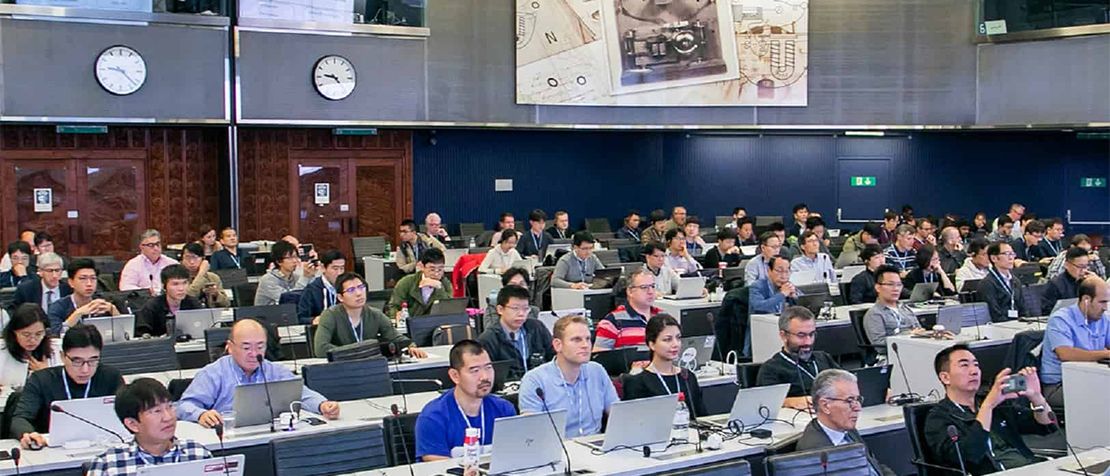
Let’s refresh how we think about media: Noah Luo
*The text below is an adapted version of my opening remarks at an ITU workshop on the future of media in Geneva, 8 October 2019. The workshop contributed to the celebrations of World Standards Day, 14 October, which this year takes the theme: ‘Video standards create a global stage’.
On 1 October, we saw the announcement of a Primetime Engineering Emmy Award for the Joint Photographic Experts Group (JPEG) in recognition of the engineering team responsible for the original JPEG image coding standard released in 1992.
Of course this is not the first time that we have received this famous international award for our technical standardization work in the area of media technologies.
The collaborative video coding work of IEC, ISO and ITU was honoured with a 2008 Primetime Engineering Emmy Award and a 2009 Technology & Engineering Emmy Award for ITU H.264 | MPEG-4 Advanced Video Coding. We received yet another Primetime Engineering Emmy Award in 2017 for High Efficiency Video Coding (HEVC, published as ITU H.265 | ISO/IEC 23008-2).
And I don’t think that this year’s Emmy Award will be our last.
In the age of IMT-2020 (5G), Artificial Intelligence (AI) and cloud and edge computing, the boundary of media is dynamic and changing fast, giving us an ever-expanding territory to work on.
What is media? Media for whom?
These are deep and thought-inspiring questions, which take time to answer and are to be answered by industry and academia. However, certain developments have provided partial answers to these questions.
For one thing, will media represent only audio and video, as many still believe today? I would like to say that such a notion is somehow out of date and needs to be refreshed.
Like ‘data’, the word ‘media’ is constantly absorbing new things.
Fundamental technical work on neural network compression is now being carried out in ISO/IEC JTC1 SC29/WG11 (Moving Picture Experts Group, MPEG). The results of this work will likely contribute to the standardization work of ITU-T Study Group 16 on intelligent multimedia services and applications.
ITU-T Study Group 16 has also been working on Immersive Live Experience (ILE) for quite some time. ILE is also a hot topic in MPEG. We are exploring the synergies between our work in this field, looking in particular at MPEG’s work on immersive metadata.
Video for humans only? Probably not.
Other forms of intelligence embodied by machines are on the rise. Machines also need to consume video. Again we see interesting work on ‘video for machines’ ongoing in MPEG.
Think of applications of media in industrial automation and automotive, for example. Technologies like AR/VR and video for machines, when combined with 5G and AI, could transform today’s manufacturing industry into tomorrow’s world of smart digital factories.
Towards Versatile Video Coding
Video coding is always at the core of the multimedia standardization work carried out collaboratively by IEC, ISO and ITU.
Our video coding standards remain our ‘Crown Jewels’.
This area of our work is still full of life and producing exciting things.
We anticipate that our Joint Video Experts Team will deliver the next-generation Versatile Video Coding (VVC) standard by mid-2020.
VVC represents yet another major breakthrough in compression efficiency. But as its name indicates, versatility is one of the biggest selling points of VVC – it will be capable of supporting a very broad range of applications.
Success in media technologies and standards always hinges on close collaboration and seamless synergy among IEC, ISO and ITU.
This is a standing tradition that we should cherish and care for forever.
AI for Good
‘AI for Good’ is our vision and slogan. But how can we turn vision into reality with our work on media standards?
We see that AI can greatly enhance the accessibility of multimedia for people with disabilities. Accessibility will thus always be an intrinsic aspect of our requirements when introducing AI into our multimedia services and applications.
AI-powered analysis of medical imagery has the potential to make a valuable contribution to healthcare. This forms a key part of the work of the ITU Focus Group on ‘AI for Health’ driven in close collaboration by ITU and the World Health Organization.
And how could technology help us to prevent AI from doing evil? Our starting point should be to understand how AI, especially deep learning, can be used to develop fake media with malicious intent.
The topics touched on by this article are addressed in depth by presentations given at the ITU workshop on the future of media.
- All presentations are freely available from the workshop programme.
- All talks can be revisited in the archive of the workshop webcast.
